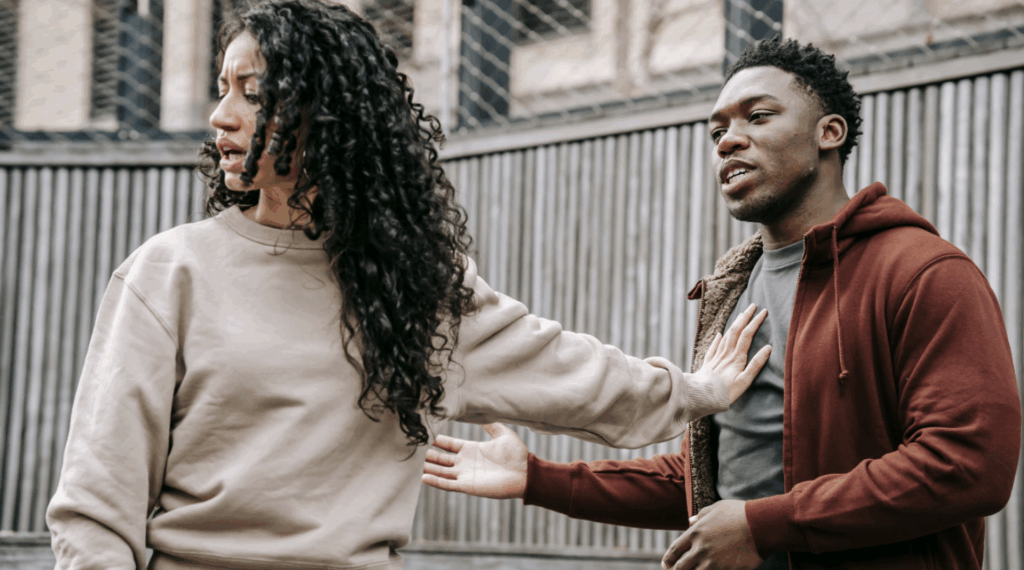Have you ever found yourself in a loving, secure relationship—but still feeling anxious, on edge, or unable to fully trust? Maybe your partner is kind, consistent, and emotionally available, yet you’re waiting for the other shoe to drop. If so, you’re not alone.
In this episode of the Roadmap to Secure Love podcast, therapists Kimberly Castelo and Kyle Benson explore a deeply human experience—what happens when we carry unhealed wounds from past relationships into the present. Even when we’ve found a partner who is safe and supportive, those old fears and stories have a way of creeping in.
This episode invites us into the messy, beautiful, and often uncomfortable work of healing relationships—starting with the one we have with ourselves.
Why the Past Still Shows Up in the Present
One of the most relatable takeaways from the episode is that the past doesn’t always stay in the past—especially when it hasn’t been processed or healed. You might be in a relationship that’s different from what you’ve experienced before. It may feel healthier, more grounded, and more reciprocal.
But the moment your partner pulls away, forgets to text back, or sets a boundary, old wounds can flare up.
As Kyle puts it, it’s like “the ghost of your ex shows up” in the room. You don’t see your current partner—you see a threat. Your brain, wired for protection, starts interpreting neutral or even kind behaviors as warning signs based on past trauma.
The Body Remembers—and Reacts
The brain and nervous system are designed to keep us safe. And safety means recognizing potential threats. Kimberly explains how our biology often favors survival over connection. That’s why we’re more likely to fixate on what’s going wrong than what’s going right—even in a loving relationship.
This negativity bias is an evolutionary response: If you narrowly escaped emotional harm before, your brain tells you to remain alert next time—even if there’s no immediate danger. The challenge is that in relationships, constant vigilance can prevent true intimacy.
The key isn’t to ignore those protective instincts—but to recognize when they’re no longer serving you.
Self-Work Is Relationship Work
One of the most powerful messages in this episode is that healing relationships starts with healing ourselves. That doesn’t mean you have to be perfectly healed before entering a relationship. It means being willing to do the work.
Kyle vulnerably shares how past betrayals led him to over function in relationships—buying gifts, trying to prove he was “enough.” But real healing began when he paused the people-pleasing and started showing up authentically, even when that meant admitting he felt insecure.
Doing your inner work looks like:
- Identifying emotional triggers and “raw spots”
- Exploring what past experiences made you believe about your worth
- Learning how to soothe your own anxiety without projecting it onto your partner
- And most importantly, being open to growth—not perfection.
We Hurt in Relationships—and We Heal in Them Too
While self-work is crucial, relationships are also a place of profound healing. When done well, they become safe containers where vulnerability is met with compassion, and wounds can slowly close.
Kim and Kyle talk about how powerful it can be to share your history with your partner—not as a test or warning, but as an invitation to connection. For example:
“I want to share something I struggle with, not because of anything you’ve done, but because of my past.”
This kind of transparency allows your partner to respond with empathy rather than confusion or frustration. It also gives them a roadmap for how to support you, whether that’s through verbal reassurance, physical affection, or simply presence.
Acknowledge, Appreciate, Ask
One simple formula shared in the episode can transform the way you communicate in your relationship:
- Acknowledge your pain – “I’ve been hurt in the past, and sometimes that fear still shows up.”
- Appreciate your partner – “You’ve been kind and consistent, and that’s been really healing for me.”
- Ask for support – “When I’m feeling anxious, can you remind me that we’re okay?”
This approach honors your emotional truth, affirms your partner’s efforts, and invites collaboration instead of criticism.
Learning to Rest in Safety
The hardest part of healing is learning to rest in safety—especially when your nervous system is conditioned to expect danger. It may feel unfamiliar or even terrifying to relax, trust, and receive love without strings attached.
But as Kimberly beautifully puts it, “Sometimes we have to reparent ourselves.” That might mean speaking kindly to the scared parts inside, reminding yourself that you’re not in the past anymore, or asking your partner for a moment of grounding connection.
Healing isn’t about pretending pain never happened. It’s about letting go of the armor that’s no longer needed—so you can fully receive the love that’s right in front of you.
Final Thoughts
Healing relationships is a lifelong journey. It’s courageous, messy, and at times deeply uncomfortable. But it’s also where some of the most beautiful transformation happens.
By doing the inner work, practicing vulnerable communication, and allowing yourself to receive love—even when it’s scary—you open the door to deeper intimacy, resilience, and peace.
Follow The Roadmap to Secure Love on Apple, Spotify, and YouTube.
Sign up for The Secure Attachment Path course to learn practical tools for building secure connections.
Until next time, stay connected and love fully. ❤️

